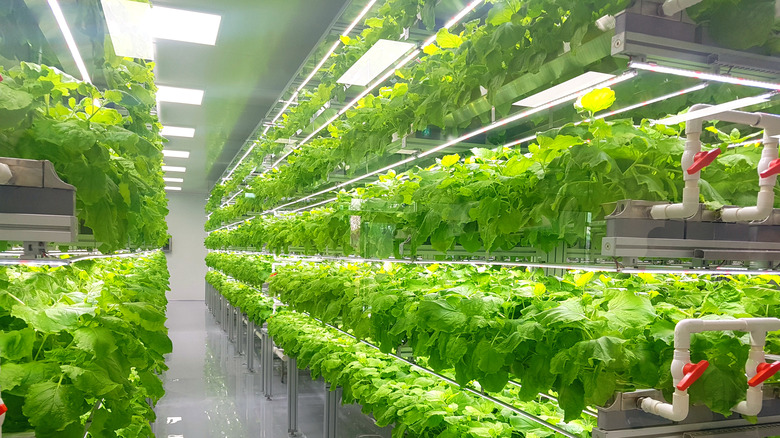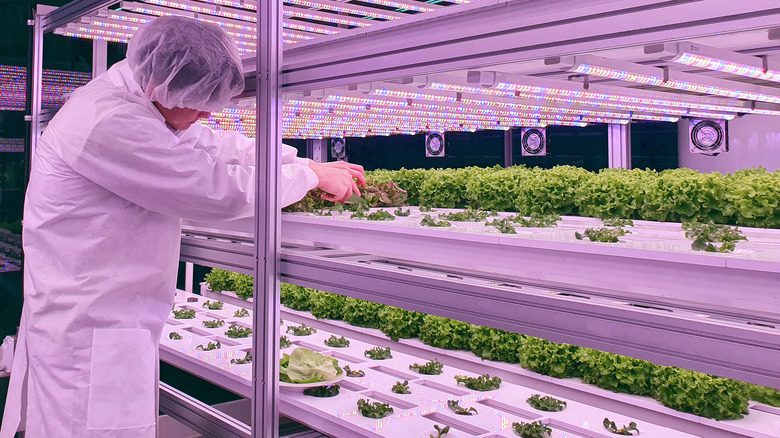Could 'Vertical Farming' Be A Solution To Growing Food Shortages?
The global food system is in a precarious position. Many experts are concerned that food shortages could soon reach a crisis point — what The Economist calls a "food catastrophe." Between Covid-19, the war in Ukraine, heat waves from climate change, and more, food shortages are brewing that might drag on for years. Already, the number of people around the world living in "severe" food insecurity recently hit 276 million — doubling over just the past two years — and food shortages are expected to cause this number to jump even more significantly (via NPR).
In addition to ideas like promoting so-called orphan crops as a solution to the global food shortage, some increasingly high-profile figures have called for more vertical farming. As the name implies, vertical farms cultivate crops in stacked boxes, typically in climate-controlled warehouses, rather than the more traditional outdoor horizontal rows.
In the U.S., one of the largest vertical farming companies, Bowery Farming, has been embraced by Silicon Valley tech funders (via Fast Company) and recently opened a massive complex in Pennsylvania that they estimate will feed 50 million people, per Food Dive. And at the 2022 World Economic Forum Annual Meeting in Davos, Switzerland, the president of the European Commission specifically cited vertical farming as a potential solution to food shortages (via European Commission). So what's the true potential of vertical farming — and can it save the food system?
What vertical farming can do — and what it can't
When it comes to the advantages of vertical farming, the numbers are striking. One indoor vertical farming company, AeroFarms, claims 95% less water usage than traditional field cultivation while producing 400 times more yield per square foot, according to Food Tank. This is partly because, compared to field farming, indoor vertical farms are more conducive to automated robotics; precise data science; and carefully calibrated temperature, humidity, and light conditions (via the World Economic Forum).
At the same time, the energy costs — and monetary costs, for that matter — required to operate a vertical farm can be sky-high, per Environmental Conscience. Jonathan Foley, the executive director of climate change organization Project Drawdown, is skeptical that vertical farms will solve all our problems. In a post on Medium, he argues that the food produced in vertical farms is too expensive to meaningfully address food security and churns out significant greenhouse gas emissions. For example, grown on a vertical farm, the 'Tesla of strawberries' cost $5 each.
Nevertheless, vertical farming is trendy and rapidly growing: The industry hit $3.1 billion in 2021 and is expected to more than triple to $9.7 billion by 2026 (via the New York Times). But whether it can be a solution to looming food shortages is still up for debate. In the meantime, the amount of food we waste is crazy – so perhaps using all the food we already produce is a good place to start.

